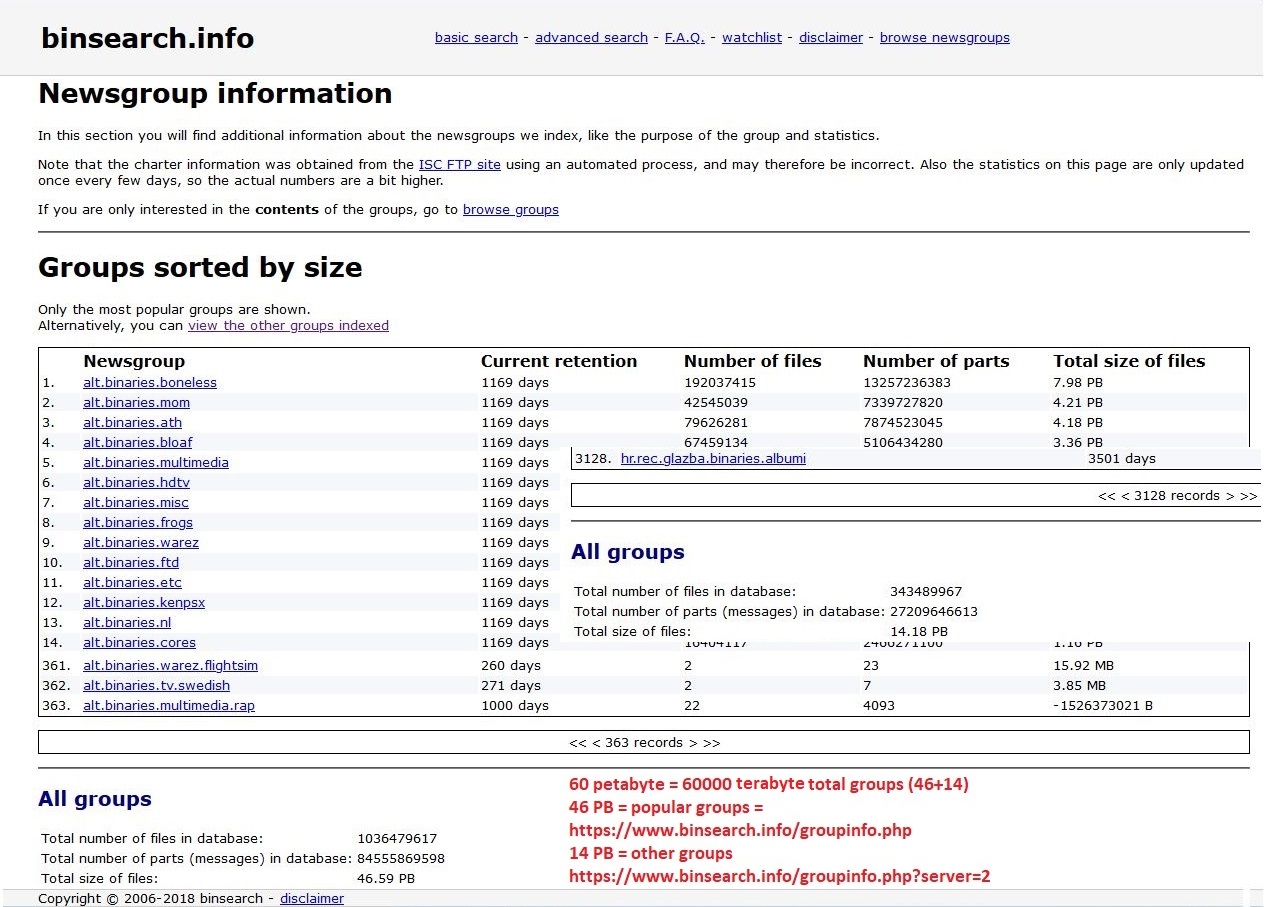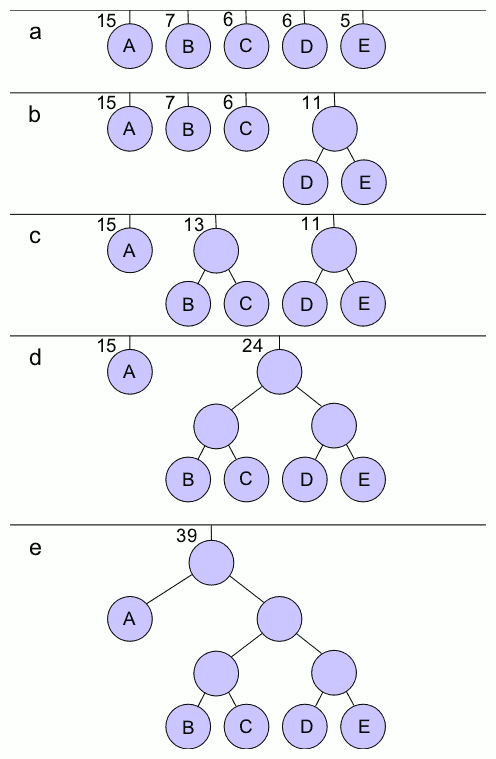|
Lempel-Ziv
LZ77 and LZ78 are the two lossless data compression algorithms published in papers by Abraham Lempel and Jacob Ziv in 1977 and 1978. They are also known as LZ1 and LZ2 respectively. These two algorithms form the basis for many variations including LZW, LZSS, LZMA and others. Besides their academic influence, these algorithms formed the basis of several ubiquitous compression schemes, including GIF and the DEFLATE algorithm used in PNG and ZIP. They are both theoretically dictionary coders. LZ77 maintains a sliding window during compression. This was later shown to be equivalent to the ''explicit dictionary'' constructed by LZ78—however, they are only equivalent when the entire data is intended to be decompressed. Since LZ77 encodes and decodes from a sliding window over previously seen characters, decompression must always start at the beginning of the input. Conceptually, LZ78 decompression could allow random access to the input if the entire dictionary were known in ad ... [...More Info...] [...Related Items...] OR: [Wikipedia] [Google] [Baidu] |
Abraham Lempel
Abraham Lempel ( he, אברהם למפל, born 10 February 1936) is an Israeli computer scientist and one of the fathers of the LZ family of lossless data compression algorithms. Biography Lempel was born on 10 February 1936 in Lwów, Poland (now Lviv, Ukraine). He studied at Technion - Israel Institute of Technology, and received a B.Sc. in 1963, M.Sc. in 1965, and D.Sc. in 1967. Since 1977 he has held the title of full professor. Lempel is now a professor emeritus in Technion. His historically important works start with the presentation of the LZ77 algorithm in a paper entitled "A Universal Algorithm for Sequential Data Compression" in the ''IEEE Transactions on Information Theory'' (May 1977), co-authored by Jacob Ziv. He is the recipient of the 1998 Golden Jubilee Award for Technological Innovation from the IEEE Information Theory Society; and the 2007 IEEE Richard W. Hamming Medal, for "pioneering work in data compression, especially the Lempel-Ziv algorithm". Lempel ... [...More Info...] [...Related Items...] OR: [Wikipedia] [Google] [Baidu] |
Lempel–Ziv–Welch
Lempel–Ziv–Welch (LZW) is a universal lossless data compression algorithm created by Abraham Lempel, Jacob Ziv, and Terry Welch. It was published by Welch in 1984 as an improved implementation of the LZ78 algorithm published by Lempel and Ziv in 1978. The algorithm is simple to implement and has the potential for very high throughput in hardware implementations. It is the algorithm of the widely used Unix file compression utility compress and is used in the GIF image format. Algorithm The scenario described by Welch's 1984 paper encodes sequences of 8-bit data as fixed-length 12-bit codes. The codes from 0 to 255 represent 1-character sequences consisting of the corresponding 8-bit character, and the codes 256 through 4095 are created in a dictionary for sequences encountered in the data as it is encoded. At each stage in compression, input bytes are gathered into a sequence until the next character would make a sequence with no code yet in the dictionary. The c ... [...More Info...] [...Related Items...] OR: [Wikipedia] [Google] [Baidu] |
Lempel–Ziv–Stac
Lempel–Ziv–Stac (LZS, or Stac compression or Stacker compression) is a lossless data compression algorithm that uses a combination of the LZ77 sliding-window compression algorithm and fixed Huffman coding. It was originally developed by Stac Electronics for tape compression, and subsequently adapted for hard disk compression and sold as the Stacker disk compression software. It was later specified as a compression algorithm for various network protocols. LZS is specified in the Cisco IOS stack. Standards LZS compression is standardized as an INCITS (previously ANSI) standard. LZS compression is specified for various Internet protocols: * – ''PPP LZS-DCP Compression Protocol (LZS-DCP)'' * – ''PPP Stac LZS Compression Protocol'' * – ''IP Payload Compression Using LZS'' * – ''Transport Layer Security (TLS) Protocol Compression Using Lempel-Ziv-Stac (LZS)'' Algorithm LZS compression and decompression uses an LZ77 type algorithm. It uses the last 2 KB of un ... [...More Info...] [...Related Items...] OR: [Wikipedia] [Google] [Baidu] |
Lossless Data Compression
Lossless compression is a class of data compression that allows the original data to be perfectly reconstructed from the compressed data with no loss of information. Lossless compression is possible because most real-world data exhibits statistical redundancy. By contrast, lossy compression permits reconstruction only of an approximation of the original data, though usually with greatly improved compression rates (and therefore reduced media sizes). By operation of the pigeonhole principle, no lossless compression algorithm can efficiently compress all possible data. For this reason, many different algorithms exist that are designed either with a specific type of input data in mind or with specific assumptions about what kinds of redundancy the uncompressed data are likely to contain. Therefore, compression ratios tend to be stronger on human- and machine-readable documents and code in comparison to entropic binary data (random bytes). Lossless data compression is used in ... [...More Info...] [...Related Items...] OR: [Wikipedia] [Google] [Baidu] |
Lossless Compression Algorithms
Lossless compression is a class of data compression that allows the original data to be perfectly reconstructed from the compressed data with no loss of information. Lossless compression is possible because most real-world data exhibits statistical redundancy. By contrast, lossy compression permits reconstruction only of an approximation of the original data, though usually with greatly improved compression rates (and therefore reduced media sizes). By operation of the pigeonhole principle, no lossless compression algorithm can efficiently compress all possible data. For this reason, many different algorithms exist that are designed either with a specific type of input data in mind or with specific assumptions about what kinds of redundancy the uncompressed data are likely to contain. Therefore, compression ratios tend to be stronger on human- and machine-readable documents and code in comparison to entropic binary data (random bytes). Lossless data compression is used in man ... [...More Info...] [...Related Items...] OR: [Wikipedia] [Google] [Baidu] |
Kilobyte
The kilobyte is a multiple of the unit byte for digital information. The International System of Units (SI) defines the prefix '' kilo'' as 1000 (103); per this definition, one kilobyte is 1000 bytes.International Standard IEC 80000-13 Quantities and Units – Part 13: Information science and technology, International Electrotechnical Commission (2008). The internationally recommended unit symbol for the kilobyte is kB. In some areas of information technology, particularly in reference to solid-state memory capacity, ''kilobyte'' instead typically refers to 1024 (210) bytes. This arises from the prevalence of sizes that are powers of two in modern digital memory architectures, coupled with the accident that 210 differs from 103 by less than 2.5%. A kibibyte is defined by Clause 4 of IEC 80000-13 as 1024 bytes. Definitions and usage Base 10 (1000 bytes) In the International System of Units (SI) the prefix '' kilo'' means 1000 (103); therefore, one kilobyte is 1000 bytes. ... [...More Info...] [...Related Items...] OR: [Wikipedia] [Google] [Baidu] |
Faculty Of Electrical Engineering And Computing, University Of Zagreb
The Faculty of Electrical Engineering and Computing ( hr, Fakultet elektrotehnike i računarstva, abbr: ''FER'') is a faculty of the University of Zagreb. It is the largest technical faculty and the leading educational as well as research-and-development institution in the fields of electrical engineering and computing in Croatia. FER owns four buildings situated in the Zagreb neighbourhood of Martinovka, Trnje. The total area of the site is . , the Faculty employs more than 160 professors and 210 teaching and research assistants. In the academic year 2010/2011, the total number of students was about 3,800 in the undergraduate and graduate level, and about 450 in the PhD program. As of academic year 2004./2005., when the implementation of the Bologna process started at the University of Zagreb, the faculty has two baccalaureus programmes (each lasting 3 years): * Electrical engineering and information technology * Computing After receiving a bachelor's degree, students can ta ... [...More Info...] [...Related Items...] OR: [Wikipedia] [Google] [Baidu] |
Trie
In computer science, a trie, also called digital tree or prefix tree, is a type of ''k''-ary search tree, a tree data structure used for locating specific keys from within a set. These keys are most often strings, with links between nodes defined not by the entire key, but by individual characters. In order to access a key (to recover its value, change it, or remove it), the trie is traversed depth-first, following the links between nodes, which represent each character in the key. Unlike a binary search tree, nodes in the trie do not store their associated key. Instead, a node's position in the trie defines the key with which it is associated. This distributes the value of each key across the data structure, and means that not every node necessarily has an associated value. All the children of a node have a common prefix of the string associated with that parent node, and the root is associated with the empty string. This task of storing data accessible by its prefix ca ... [...More Info...] [...Related Items...] OR: [Wikipedia] [Google] [Baidu] |
Usenet Newsgroup
A Usenet newsgroup is a repository usually within the Usenet system, for messages posted from users in different locations using the Internet. They are discussion groups and are not devoted to publishing news. Newsgroups are technically distinct from, but functionally similar to, discussion forums on the World Wide Web. Newsreader software is used to read the content of newsgroups. Before the adoption of the World Wide Web, Usenet newsgroups were among the most popular Internet services, and have retained their noncommercial nature in contrast to the increasingly ad-laden web. In recent years, this form of open discussion on the Internet has lost considerable ground to individually-operated browser-accessible forums and big media social networks such as Facebook and Twitter. Communication is facilitated by the Network News Transfer Protocol (NNTP) which allows connection to Usenet servers and data transfer over the internet. Similar to another early (yet still used) pro ... [...More Info...] [...Related Items...] OR: [Wikipedia] [Google] [Baidu] |
Huffman Coding
In computer science and information theory, a Huffman code is a particular type of optimal prefix code that is commonly used for lossless data compression. The process of finding or using such a code proceeds by means of Huffman coding, an algorithm developed by David A. Huffman while he was a Sc.D. student at MIT, and published in the 1952 paper "A Method for the Construction of Minimum-Redundancy Codes". The output from Huffman's algorithm can be viewed as a variable-length code table for encoding a source symbol (such as a character in a file). The algorithm derives this table from the estimated probability or frequency of occurrence (''weight'') for each possible value of the source symbol. As in other entropy encoding methods, more common symbols are generally represented using fewer bits than less common symbols. Huffman's method can be efficiently implemented, finding a code in time linear to the number of input weights if these weights are sorted. However, althou ... [...More Info...] [...Related Items...] OR: [Wikipedia] [Google] [Baidu] |
Endianness
In computing, endianness, also known as byte sex, is the order or sequence of bytes of a word of digital data in computer memory. Endianness is primarily expressed as big-endian (BE) or little-endian (LE). A big-endian system stores the most significant byte of a word at the smallest memory address and the least significant byte at the largest. A little-endian system, in contrast, stores the least-significant byte at the smallest address. Bi-endianness is a feature supported by numerous computer architectures that feature switchable endianness in data fetches and stores or for instruction fetches. Other orderings are generically called middle-endian or mixed-endian. Endianness may also be used to describe the order in which the bits are transmitted over a communication channel, e.g., big-endian in a communications channel transmits the most significant bits first. Bit-endianness is seldom used in other contexts. Etymology Danny Cohen introduced the terms ''big-endian'' ... [...More Info...] [...Related Items...] OR: [Wikipedia] [Google] [Baidu] |



